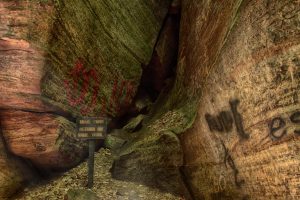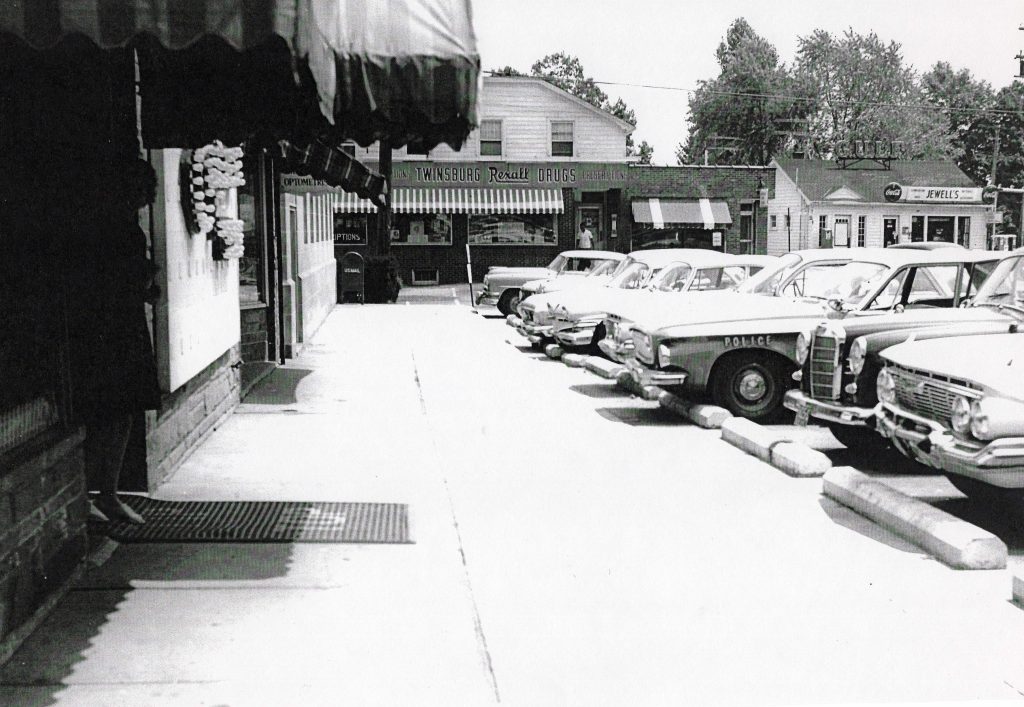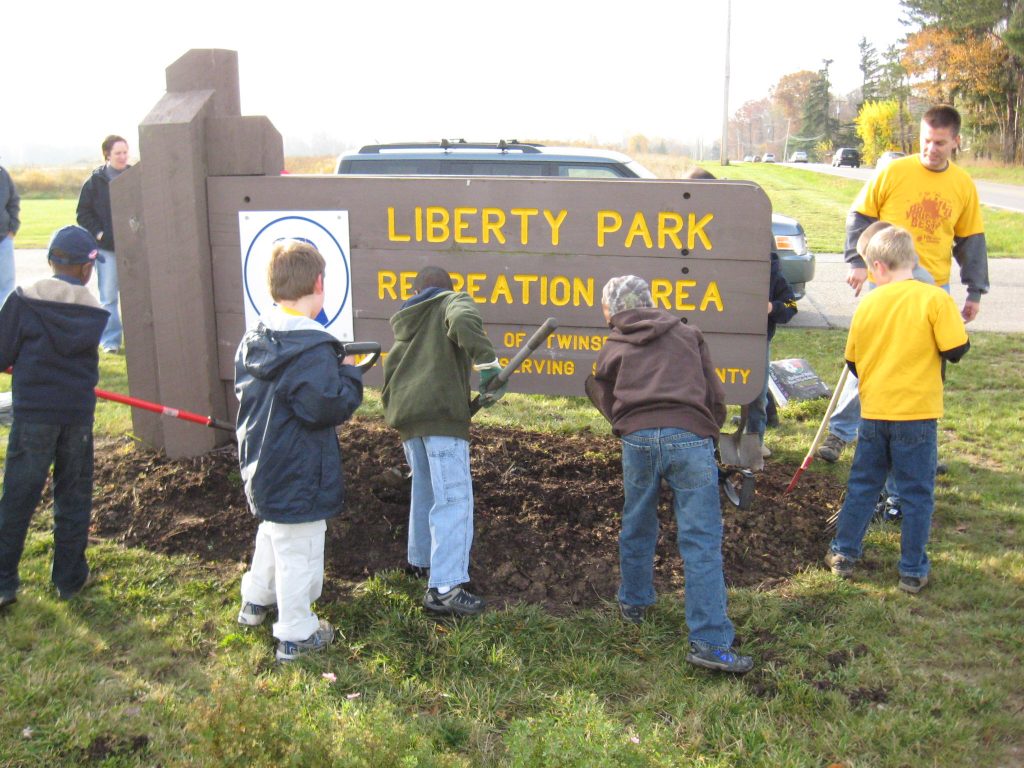One of the three communities’ greatest natural assets is Liberty Park. The park contains a moss-capped landscape of slump rocks, vertical crevices and sedimentary layers, rock cliffs, colossal boulders, and a cave that is more spacious than some of the homes townspeople grew up in.
Initially Liberty Park was privately owned. It was the ever progressive-minded Mayor Karabec who realized the potential of procuring the park. During Karabec’s administration he composed a letter of intent (including price) to purchase Liberty Park from its previous owner, but the procurement of the park wasn’t finalized until Mayor Procop was in office. The formal dedication took place on April 22, 2001. Prior to the purchase, Twinsburg only owned three hundred acres of open-spaced parkland; now there are over two thousand acres. The process of negotiating with the owner was arduous, as he vacillated over whether to sell to the city or a land developer, the latter being considerably more profitable.
Ultimately the city purchased the property for $11 million. It was the catalyst for Summit County to continue purchasing land in the area, creating a link between Twinsburg and Tinker Creek State Park. Twinsburg owns the land, but the Metro Parks manage Liberty Park, helping to preserve the Ledges and the wetlands.
Over the years, the park’s three thousand acres had been the site of an amusement park, a hotel, a railroad, and farms. Some of the owners had toppled trees and straightened a brook. In 2011 Summit County Metro Parks added sixty-six acres to the park using funds obtained through the Trust for Public Land amounting to $1.22 million, which went toward completing access to the park from Ravenna Road. One of the newest additions is Liberty Park Nature Center, a $3 million facility constructed by the Summit County Metro Parks. Visitors are greeted by an inanimate and presumably affable life-sized black bear upon arriving at the center.
The Ledges are part of the nine-hundred-acre land deal Mayor Katherine Procop brokered with a local landowner. There may be no more beloved natural phenomena in the three communities than the Ledges. It seems as if almost everyone who grew up in the area has a fond childhood memory connected with the natural marvel. It was a popular hangout for kids, teenagers, and families alike. More than just a source of natural beauty and a recreation destination, the Ledges have played a huge part in the history of Twinsburg, and in the determination of its geographical boundaries. For a time all of Twinsburg’s water (village and Township) was obtained from wells located in the Ledges.
“Significance of ledges around Twinsburg is that Twinsburg sits in a pocket surrounded by ledges. South to where the Cleveland Clinic is located, there are ledges running behind it. When you go west towards Macedonia there are ledges right at the 271-82 intersection. And then east are the Liberty Park Ledges,” according to Twinsburg naturalist Stanley Stine.
Possibly the most important aspect of the park is the unusual plant and wildlife that inhabits the acreage. The unique flora include immensely colorful lichen species that are a cross between fungi and algae, and one of a kind in the state of Ohio. A four-toed salamander found in 2003 was considered extremely rare, the only salamander in the state that has four toes on its hind legs instead of the usual five.
The park is home to endangered reddish brown Indiana bats, which almost assuredly will not bite the necks of unsuspecting visitors. Due to the presence of these bats in Liberty Park’s caves, construction in the nearby vacated Chrysler complex was postponed as it was believed some members of the endangered species might inhabit that area as well. The U.S. Fish and Wildlife Service had to officially determine and declare that none of these bats were in an area before trees could be cleared and the area developed. It was discovered that a number of bats suffered from white-nose syndrome, leading to their untimely demise. (As of 2012, 5.7 million North American bats have relinquished their mortal coil due to this incurable disease.)
Other rare creatures, including a minuscule, shrimp-like crustacean, have been discovered residing in the caves of Liberty Park. There are dozens of endangered species, plus an assortment of other wildlife: beavers, otters, red-backed salamanders, wood frogs, gray rat snakes, and numerous dragonflies and butterflies.
The park also serves as one of the most popular destinations for birders in Northeast Ohio; in fact it was designated as an “Important Bird Area” by the National Audubon Society.
Liberty Park continues to be one of the most popular destinations in the three communities and a local treasure. Former Mayor Procop considers its purchase to be “the legacy project of our community.”


